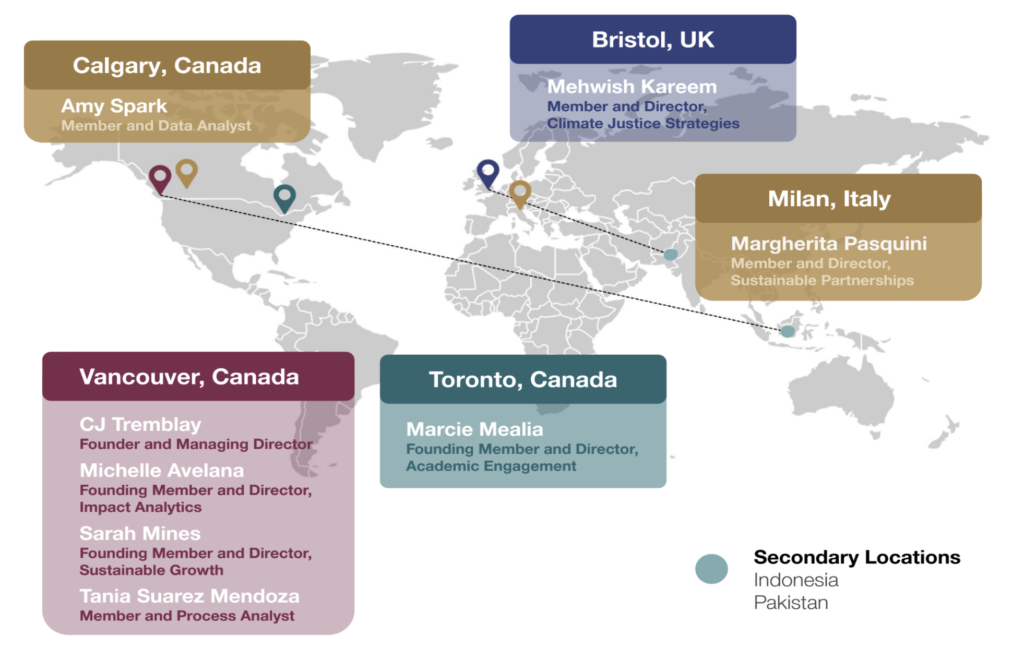Alethea is quite literally a derivative of the meaning of “Truth”, so we’re going to start with a truth none of us particularly like but must face: that hour for hour, flying burns more fossil fuel than other modes of transportation, and as a sector highly reliant on air travel, it is our greatest opportunity for reduction and impact. I’m writing today to share that at Alethea, our 2023 travel-related emissions reflected a reduction of more than 90% from our emissions baseline in 2019.
From our very first meetings about building Alethea, we were committed to “doing business differently than how it’s always been done” and making sure not to forget the lessons we’d learned during the pandemic. You’ve likely heard me, or Sarah or other Alethea members make reference to that. Often.
In our previous blog posts, we’ve shared questions we ask ourselves for which conferences to attend, or why we’re so committed to virtual conference, and in this blog we pull back the curtain on our own operations, how we established our emissions baseline year, our emissions strategy, and the impact of our strategy. I wish I could tell you that the first thing we did when we started Alethea was calculate our emissions, but that would be a lie.
That said, we did know that we wanted to show that we could engage with the sector – governments, conference providers, institutional clients – in meaningful ways without the emissions impact we used to have when we worked in similar roles within our previous organizations. We needed to show that we could navigate this sector and engage with clients and partners differently and I knew eventually we’d share our own emissions strategy publicly.
The following just goes to show that you don’t have to have all the data to get started, you just need to start taking action because you can always go back and retroactively do the math!
Travel Emissions Baseline Year
First things first – we use 2019 as our baseline year because the UN Race to Zero campaign sets targets for a reduction of 50% by the next decade, so we’re starting with that year in order to see where we want to be come 2030. Additionally, 2019 was our sector’s last “normal” year pre-covid and is an excellent representation of our emissions from “the way it’s always been done”.
Secondly, there was no Alethea in 2019. But our four founding members (CJ, Marcie, Michelle, and Sarah) all worked in the sector for service providers in similar roles and thus we assumed that our travel from that year to our partner/client visits, conferences, and other events would be reflective of our baseline at Alethea.
Travel Emissions Reduction Strategy
While we only recently calculated our emissions baseline, from day one we had an emissions strategy that would allow us to do our business development and partnership work by focusing on attending virtual events, capturing local conference opportunities, and growing our team with geographic intention.
Below is the geographic make-up of our team.

We were founded in Vancouver, but we grew our team intentionally in order to include passionate individuals from across various geographies in order to serve clients and partners, as well as attend conferences, using lower-carbon modes of transportation such as train travel.
Impact of Emissions Strategy
As I mentioned earlier, we didn’t calculate our baseline and operational emissions until recently. But that’s okay! We were able to retroactively calculate our emissions for 2019 by reviewing our travel , as well as for our previous years’ operations.
Below, you can see how our 2019 emissions compared to our 2023 emissions and our 2024 emissions through March. So even though we didn’t have our emissions baseline and targets set, our commitment to our emissions strategy led us to reductions much higher than science-based targets.
|
2019 |
2023 |
2024 YTD |
|
|
Staff Participation |
4 |
6 |
8 |
|
# of Events Attended |
14 |
5 |
3 |
|
Total Emissions – Tonnes CO2e |
56.7 |
3.3 |
0.01 (13kg) |
For more information on our 2023 events plan and how our decision-making process led to reduced emissions in 2023, we talk about the decisions we made on which conferences to attend in a previous blog post as well.
After the emissions reduction overall, what was most notable to us was that the emissions intensity for event participation was drastically reduced from 4.05 tonnes of CO2e to 0.55 tonnes of CO2e per event, all while increasing the number of people who are participating in events. Essentially we were able to reduce the average emissions to attend an event and we did so by capturing local and low-carbon travel opportunities, attending virtual conferences, and prioritizing events that allowed us to attend two conference on one flight.
We hope that in sharing this part of Alethea’s journey with you that you might take away the following:
- You can implement an emissions strategy at any time, you don’t need to know your exact emissions baseline to start taking action (we can help with that if you need a bit of guidance!)
- You can calculate emissions retroactively, but calculating your emissions is a critical step to understanding how you have worked and how you’re working
- There are a number of possibilities for emissions targets when you’re looking at trying to implement reductions
Thanks for reading!

